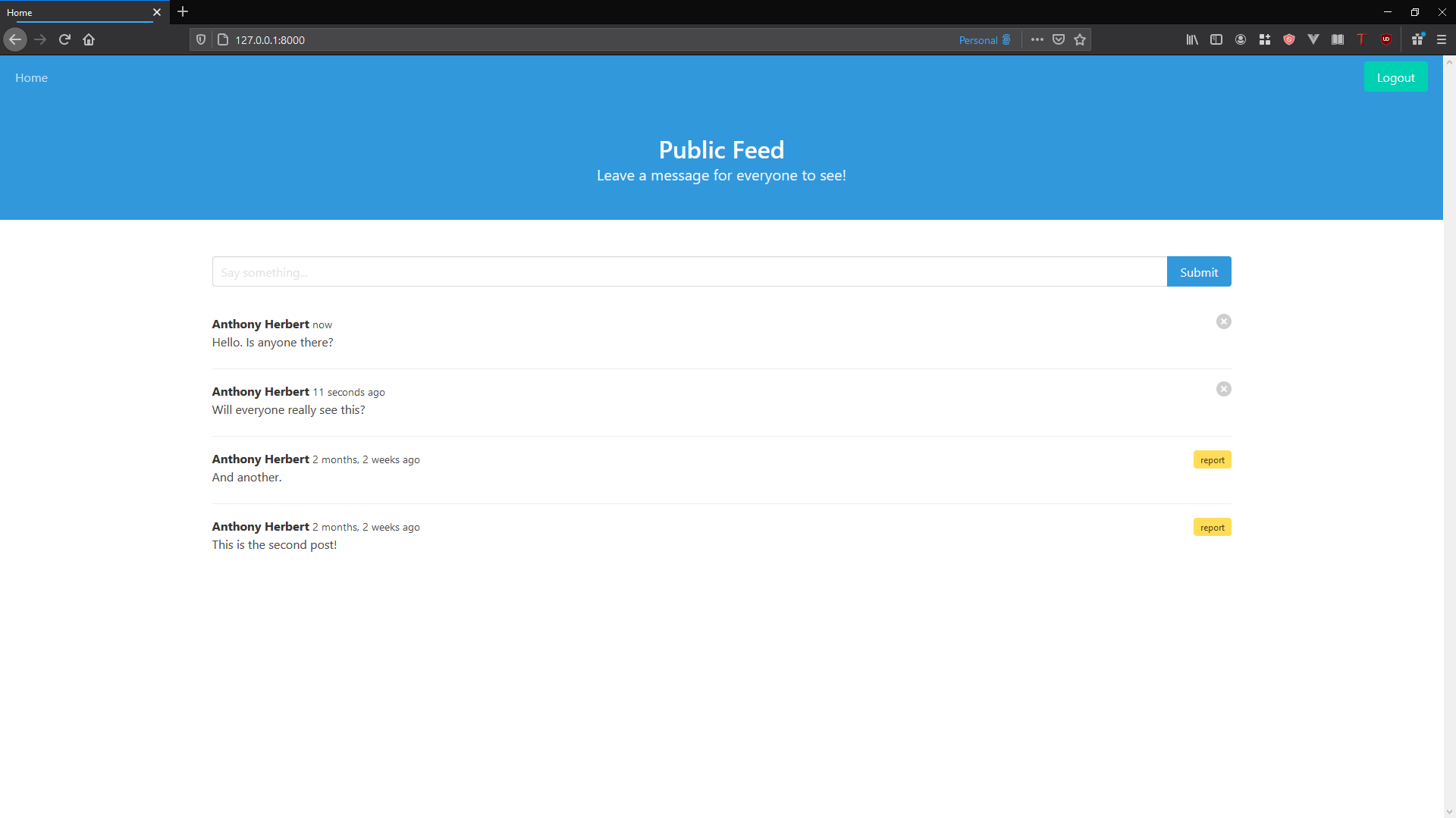https://github.com/auth0-blog/django-feed-auth0
Build a Django public feed application
https://github.com/auth0-blog/django-feed-auth0
auth0 django python
Last synced: 7 months ago
JSON representation
Build a Django public feed application
- Host: GitHub
- URL: https://github.com/auth0-blog/django-feed-auth0
- Owner: auth0-blog
- Created: 2020-11-04T20:21:58.000Z (over 4 years ago)
- Default Branch: main
- Last Pushed: 2021-07-15T21:41:59.000Z (almost 4 years ago)
- Last Synced: 2024-04-13T03:33:12.252Z (about 1 year ago)
- Topics: auth0, django, python
- Language: Python
- Homepage: https://auth0.com/blog/django-authentication/
- Size: 13.7 KB
- Stars: 6
- Watchers: 1
- Forks: 5
- Open Issues: 1
-
Metadata Files:
- Readme: README.md
Awesome Lists containing this project
README
This application is based on [this Django authentication tutorial](https://auth0.com/blog/django-authentication/) where you learn how to create a public feed application, add authentication, and add moderator permissions.

## Running the application
First, clone the application:
```bash
git clone [email protected]:auth0-blog/django-feed-auth0.git
cd django-feed-auth0
```
Next, install the dependencies:
```bash
python -m venv env
source env/bin/activate
pip install -r requirements.txt
```
Then, you need to update your `settings.py` file with your own Auth0 values. You can [sign up for a free Auth0 account here](https://auth0.com/signup) if you don't have one already.
You can find the location of those values in your Auth0 dashboard. For more details, please see the ["Adding Authentication" section of the tutorial](https://auth0.com/blog/django-authentication#adding-authentication).
Migrate the application:
```shell script
cd feed
python manage.py migrate
```
Create a superuser:
```shell script
python manage.py createsuperuser
```
Finally, run the application:
```bash
python manage.py runserver
```